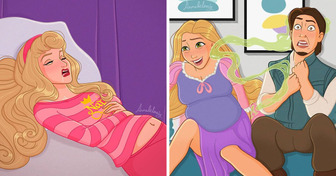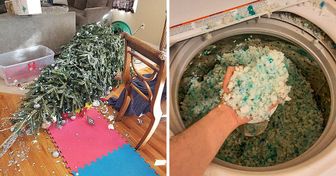Helen Hunt, 60, Stuns During Her Latest Appearance, and Her Lips Become the Center of Attention

If you believe that people were less eccentric in the past than they are today, think of their fashions and traditions. Maybe you’ll change your opinion.
Bright Side has gathered a few things that our ancestors thought normal. We found out we’re not so odd after all.
Europeans who lived in the Middle Ages practiced what we now call biphasic sleep. The first sleep started at sunset and lasted until about midnight; then people would wake up and stay awake for 2-3 hours. Some used that time to pray or read, and some spent it with their family or neighbors. Then came the time of the second sleep, which lasted until sunrise.
A knocker-upper was a profession that existed from the mid-18th century until the 1950s. Their job was to wake people who had to get up early. They knocked on their clients’ windows with sticks or shot at them with peashooters. It’s unclear who woke up the knocker-uppers, but there’s a version that they didn’t go to bed before work at all.
From the 16th century and until around 1920, it was customary for little boys up until a certain age (4-8 years) to wear dresses. The main reason was perhaps the high cost of clothing: dresses were easier to make "to grow into." The tradition didn’t bypass even royal families: this photo depicts Alexei, the son of the Russian Emperor Nicholas II, in a dress similar to those worn by his sisters.
Chopines, also known as zoccoli or pianelle, are a kind of platform shoe up to 50 cm (20 in) high. Small wonder that those who wore them required the help of servants in order not to literally fall victim to fashion. Admittedly, chopines were worn not just out of style consciousness but also so as not to stain the wearer’s clothes in street mud.
This treatment mode was popular for 2,000 years up until the early 20th century. Bloodletting was practiced to treat any ailment and often did more harm than good, weakening the patient even further. This practice was banner later for obvious dangers.
In some medieval countries, people believed that water only brought illness to man, and lice were called “the pearls of God.“ These beliefs were shared even by monarchs. Isabella I of Castille was proud of the fact that she only washed twice in her life: at birth and before her wedding. According to one testimony, a cavalier once made a comment upon her dirty hands and nails, to which the Queen replied, ”Oh, if only you could see my feet!"
Unlike us, people in the 18th and 19th centuries couldn’t just go into the water on the beach. They had to use bathing machines: special carts that looked like beach huts. The carts were driven into the water so that bathers could swim without any prying eyes watching them. Furthermore, women’s bathing machines were set some distance away from men’s.
The list of things people used before the invention of toilet paper could go on and on. It includes plant leaves, corn cobs, coconut shells, sheep wool and cloth (for those who could afford them), sponge on a stick, or just water. But the Ancient Greeks surprised us the most: for certain hygienic purposes, they used rocks, pebbles, or shards of pottery.











